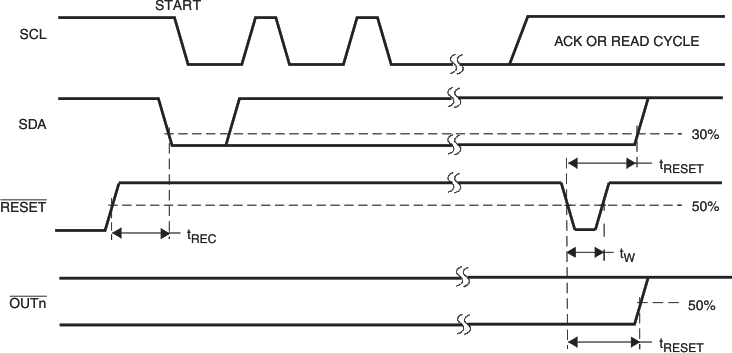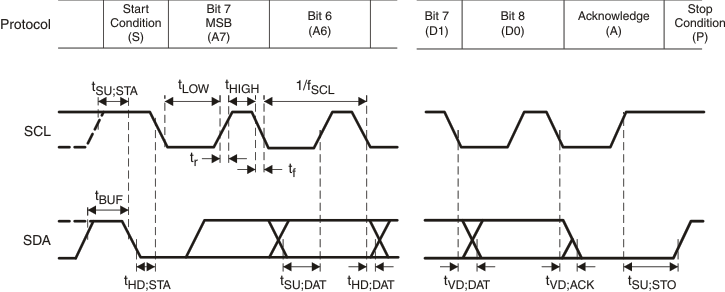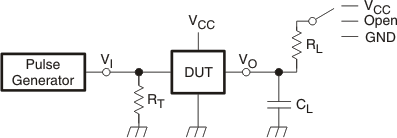SLDS162B March 2009 – December 2015 TLC59108F
PRODUCTION DATA.
- 1 Features
- 2 Applications
- 3 Description
- 4 Revision History
- 5 Pin Configuration and Functions
- 6 Specifications
- 7 Parameter Measurement Information
-
8 Detailed Description
- 8.1 Overview
- 8.2 Functional Block Diagram
- 8.3 Feature Description
- 8.4 Device Functional Modes
- 8.5 Programming
- 8.6
Register Maps
- 8.6.1 Control Register
- 8.6.2 Mode Register 1 (MODE1)
- 8.6.3 Mode Register 2 (MODE2)
- 8.6.4 Individual Brightness Control Registers (PWM0-PWM7)
- 8.6.5 Group Duty Cycle Control Register (GRPPWM)
- 8.6.6 Group Frequency Register (GRPFREQ)
- 8.6.7 LED Driver Output State Registers (LEDOUT0, LEDOUT1)
- 8.6.8 I2C Bus Sub-Address Registers 1 to 3 (SUBADR1-SUBADR3)
- 8.6.9 LED All Call I2C Bus Address Register (ALLCALLADR)
- 9 Application and Implementation
- 10Power Supply Recommendations
- 11Layout
- 12Device and Documentation Support
- 13Mechanical, Packaging, and Orderable Information
Package Options
Mechanical Data (Package|Pins)
- PW|20
Thermal pad, mechanical data (Package|Pins)
Orderable Information
7 Parameter Measurement Information
 Figure 3. Definition of Reset Timing
Figure 3. Definition of Reset Timing
 Figure 4. Definition of Timing
Figure 4. Definition of Timing

Rise and fall times refer to VIL and VIH.
Figure 5. I2C Bus Timing

RL = Load resistance for SDA and SCL; should be >1 kΩ at 3-mA or lower current.
CL = Load capacitance; includes jig and probe capacitance.
RT = Termination resistance; should be equal to the output impedance (ZO) of the pulse generator.
Figure 6. Test Circuit for Switching Characteristics
CL = Load capacitance; includes jig and probe capacitance.
RT = Termination resistance; should be equal to the output impedance (ZO) of the pulse generator.